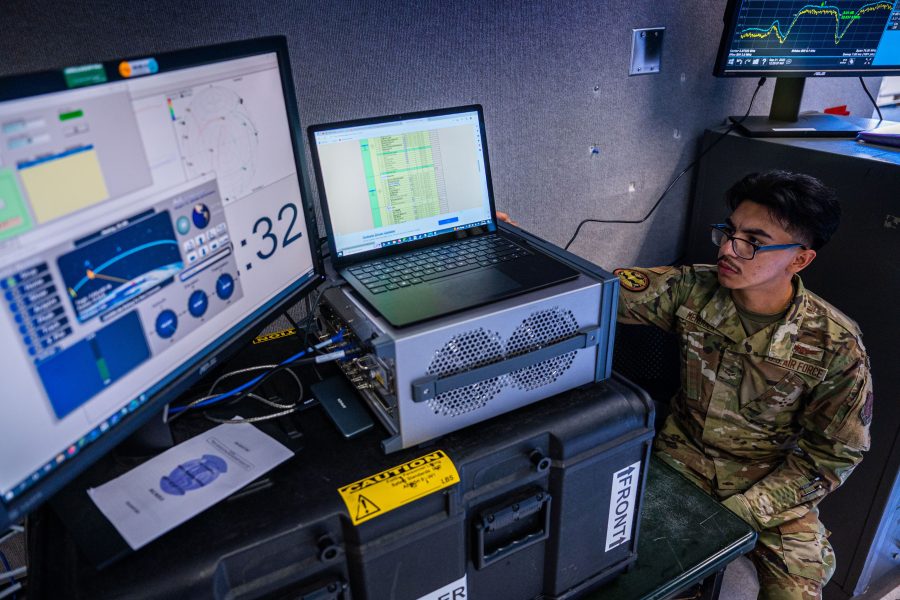
Space Force Eyes Better EW Test and Training Ranges with New Contract Awards (Image Credit: airandspaceforces)
The Space Force has awarded six-month contracts to six different companies to develop plans for improving the service’s electronic warfare training capabilities in the latest move in USSF’s efforts to upgrade its test and training infrastructure.
Space Training and Readiness Command and Space Systems Command collaborated on the contract awards, which were given to NouSystems, ExoAnalytic Solutions, TMC Design, HII Mission Technologies Corp., Parsons Government Services Inc., and Lockheed Martin. Announced last week, the contracts started at the end of February and will last through August.
The program, dubbed Advanced Space Technology for Range Operations-Electromagnetic Range or ASTRO-E, is aimed at providing enhanced “ground infrastructure and on-orbit subjects” for electronic warfare test and training, according to a service release.
“By providing space warfighters with interconnected, scalable, and distributed physical and digital ranges for full-spectrum testing and training, this project will enable joint warfighting solutions to prevail in conflict,” the release added.
The program would be just the latest addition to what the Space Force calls the National Space Test and Training Complex (NSTTC), a collection of sensors and assets on the ground and in orbit that the service uses as “the gym where we go to work out the force,” then-STARCOM commander Maj. Gen. Shawn W. Bratton said in May 2023.
Chief of Space Operations Gen. B. Chance Saltzman made improving test and training infrastructure one of his top priorities from the very start of his tenure. In his confirmation hearing before the Senate in 2022, he noted that, “We don’t have simulators that allow our operators to practice their tactics against a thinking adversary, even if it’s a simulated adversary. We don’t have good simulators. We don’t have ranges where they can routinely practice their tradecraft. We don’t have the ability to link multiple units together so they can practice the coordination that’s necessary to do large force employments, if you will.”
In the two years since, the Space Force has sought to address the issue through its Operational Test and Training Infrastructure initiative.
“We are already building live ranges to conduct events in the actual environment ensuring ‘ground truth’ is captured for systems and tactics evaluations,” Saltzman said of the effort this February at the AFA Warfare Symposium. “We are also creating an intelligence-informed inventory of adversary capabilities—with Opposing Forces whose tactics reflect actual counterspace threats to the space, ground, and link segments. Finally, we are investing in high-fidelity mission-specific simulators that replicate each unique mission area, weapons system, and their associated crew positions.”
STARCOM and SSC have collaborated on an integrated program office, and the budget devoted to the enterprise is exploding from $350 million in fiscal 2024 to a planned $438 million in 2025—a 25 percent increase even as the Space Force’s overall budget is projected to decline slightly.
In congressional testimony earlier this year, Saltzman highlighted EW in particular as an area where the Space Force was expanding its test and training infrastructure investments. Such investments could help expand new exercise series like Black Skies, the Space Force’s premier EW training event that expanded in September to include more than 170 participants with live-fire and simulated portions.








